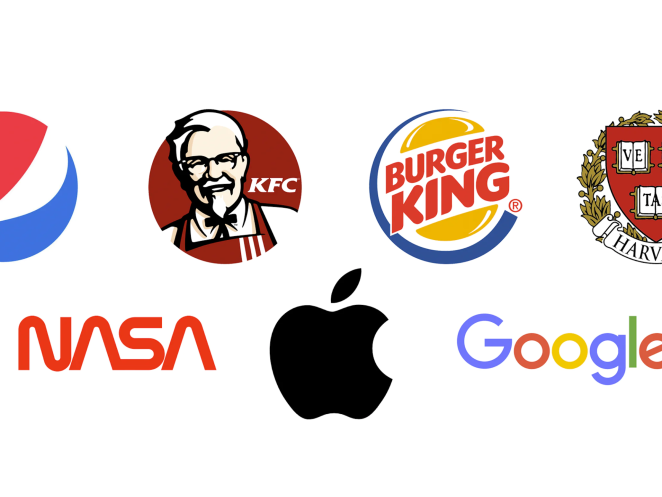As creatives, we’re forever being told to lean into our wilder impulses and “think different”. But if standing apart is so vital, why are we seeing so many brands following the same trends and looking so interchangeable?
Brands invest significant resources into creating unique logos, memorable slogans, and captivating marketing campaigns but you’ll still invariably come across brands that look remarkably similar, even without trying too hard.
The closer you look the more endemic the situation is revealed to be and it’s all happening on multiple levels. For example, all luxury clothing brands seem to use the same fonts and logo shapes (Gucci and Chanel, anyone) but then so do soft drink and lager brands. On the other end of the spectrum, you have brands that have no business belonging in the same conversation with eerily similar branding platforms. Just look at Pepsi and Korean Air!

But how did we get here? Let’s have a look under the hood, shall we?
Market Saturation
In most industries, numerous players are vying for consumer attention, and as a result, they often adopt similar strategies to appeal to their target audience. Consider the smartphone market. With countless brands competing for market share, it's not surprising that many devices share similar features, sleek designs, and even comparable marketing messages. In such a competitive environment, brands may feel compelled to emulate successful trends and formulas, which inadvertently leads to a lack of distinctiveness.
Fear of Taking Risks
Developing a unique brand identity requires stepping outside the comfort zone and breaking away from the norm. However, taking risks can be daunting for businesses, especially when they have a lot at stake. Many brands opt for a safer approach, following the tried-and-tested path rather than venturing into uncharted territories. This risk-averse mindset often results in brands playing it safe, ultimately leading to a lack of differentiation and a sea of similar-looking brands.

Market Research
Brands conduct extensive research to understand their target market, identify consumer preferences, and gain insights into what resonates with their audience. While this approach is valuable in shaping effective marketing strategies, it can inadvertently contribute to brand similarity. If market research indicates that certain design elements or messaging resonate well with consumers, brands may feel compelled to incorporate these elements into their own identity, leading to a homogenization of the marketplace.
Technology
The rapid evolution of technology has played a significant role in the convergence of brand aesthetics. With the proliferation of digital platforms and the rise of social media, brands are constantly exposed to each other's visual identities. This exposure can inadvertently influence design choices, leading to a blending of styles and the emergence of design trends. In this digital age, where information is readily accessible and trends spread quickly, it becomes more challenging for brands to maintain a distinct visual identity that sets them apart from their competitors.

Consumer Expectations
It's also important to consider the role of consumer expectations. Consumers have become accustomed to certain design conventions within specific industries. For instance, if we think about fast-food chains, we often expect vibrant colours, bold typography, and simplistic logos. When a brand deviates too far from these expectations, it may face resistance or confusion from its target audience. As a result, brands may find themselves conforming to established industry norms to avoid alienating customers, leading to a lack of distinction among competitors.
Exceptions to the Rule
However, despite the prevalence of brand similarity, some companies manage to stand out from the crowd. These brands understand the importance of differentiation and strive to create unique identities that resonate with their target audience. Take Apple, for example. The sleek, minimalist design of their products, coupled with their innovative approach to technology, has set them apart from their competitors. By focusing on their core values and consistently delivering exceptional products, Apple has successfully carved out a distinct brand identity in a crowded market.

Taking Calculated Risks
While distinction is undoubtedly important for brands, various factors contribute to the prevalence of brand similarity. However, it is crucial for businesses to recognize the value of differentiation and actively work towards creating unique brand identities. By taking calculated risks, breaking away from conventions, and staying true to their core values, brands can rise above the sea of similarity and establish a lasting connection with their target audience.




